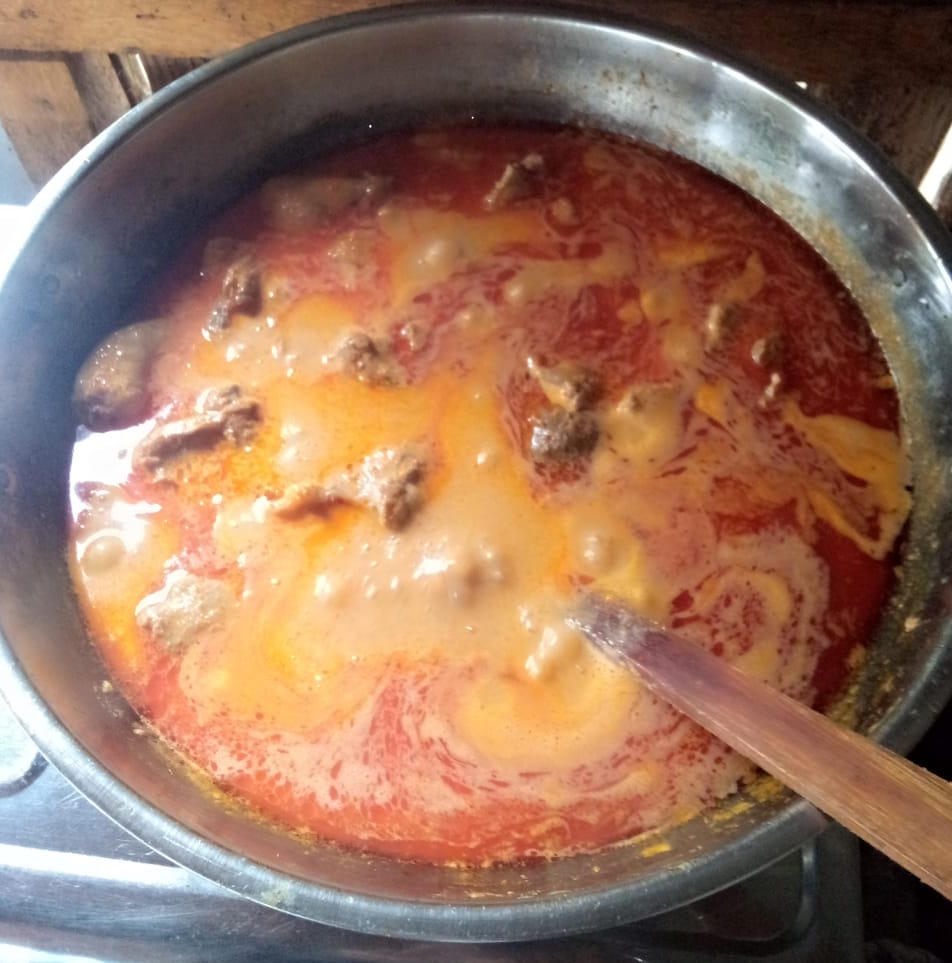Our Recipe of the Month is for Kuku Sabzi, an Iranian egg and herb dish that can be eaten as a snack or main course. Often referred to as "frittata-like," the proportion of eggs to other ingredients is lower than what is typical for a frittata. The addition of flour and baking soda makes kuku sabzi a bit more cake-like, resulting in a unique and absolutely herbaliscious!
![]()
In Farsi, "kuku" denotes an omelette-style egg dish, and "sabzi" means "herbs." Other kuku egg dishes are made with potato (kuku sibzamini), eggplant (kuku-ye bādenjān), and fish roe (ašbal kuku), but kuku sabzi is the most popular. It is often made for Nowruz, Persian Spring festivals, and is also enjoyed at Easter by Christian Iranian Armenians and Iranian Georgians. The eggs in kuku symbolize fertility, while the fresh herbs represent rebirth. Kuku sabzi is a versatile dish that can be enjoyed at any time of the year for a snack or meal. It is often served with other dishes or a small bowl of lightly whipped yogurt, which makes it creamier. Kuku sabzi can be made a day ahead of time and is frequently served at room temperature. Traditionally, the dish was cooked in a frying pan on the stove, but increasingly, cooks are baking it instead. In either case, using a lower heat is preferable. It is typically cooked in round pans and sliced like a pie before serving.
The herbs used for kuku sabzi are often catch-as-catch-can, whatever is available, but the most popular herbs are flat-leaf parsley, cilantro, leeks (green part), scallions, romaine lettuce, chives, fenugreek leaves, and dill. Spices include cinnamon, cumin, cardamom, black pepper, turmeric, and salt. Baking powder and a small amount of flour are often added to create a more cake-like texture, which is less dense. Any combination of herbs and spices can be used to make kuku sabzi, but an abundance of parsley is always preferred. Whole eggs are whipped until they become frothy for this dish. Common additions include dried barberries, halved for decoration, and chopped walnuts for taste and texture. In a pinch, dried cranberries or pomegranate seeds can be substituted for dried barberries.
Cook's notes: The only difficulty in making kuku sabzi is the large amount of chopping required for the herbs. While food processors are helpful for many tasks, they should not be used for kuku sabzi, as they will bruise the herbs and create a lot of liquid, which is undesirable. The herbs should be chopped for as long as possible. Don't give up!
Ingredients:
- 2 cups of mixed fresh herbs (parsley, cilantro, dill, chives, and fenugreek)
- 4 eggs
- 1/4 cup of flour
- 1/2 teaspoon of baking powder
- 1 teaspoon of salt
- 1/2 teaspoon of black pepper
- 1/2 teaspoon of turmeric
- 1/2 teaspoon of cinnamon
- 1/2 teaspoon of cardamom
- 1/2 teaspoon of cumin
- 1/2 cup of olive oil
- 1/2 cup of dried barberries
- 1/2 cup of roughly chopped walnuts
Preparation:
- Preheat your oven to 350°F.
- Wash the herbs and finely chop them.
- In a large mixing bowl, beat the eggs until frothy.
- Add the flour, baking powder, salt, black pepper, turmeric, cinnamon, cardamom, and cumin to the eggs and mix well.
- Add the chopped herbs, dried barberries, and chopped walnuts to the mixture and stir until everything is evenly distributed.
- Grease a 9-inch baking dish with oil and pour the herb and egg mixture into it, spreading it evenly.
- Bake for about 45-50 minutes or until the top is golden brown and the kuku sabzi is cooked through.
- Remove the kuku sabzi from the oven and let it cool for a few minutes.
- Cut into slices and serve with plain Greek yogurt and a flatbread like sangak.
Noosh-e-jan (نوش جان)!
Recipe by T. Johnston-O'Neill
Photos by Shari K. Johnston-O'Neill









